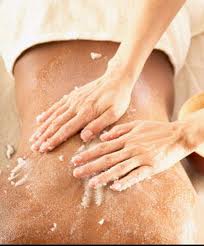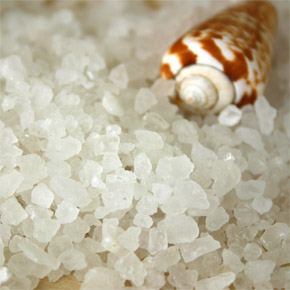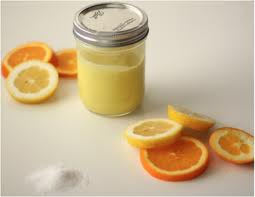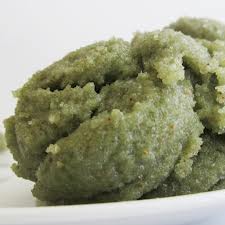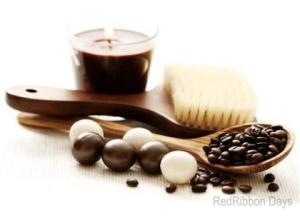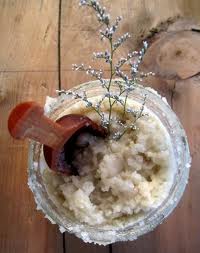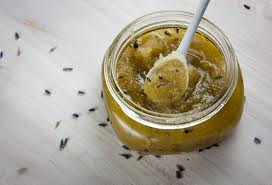Preventing Burnout
Signs, Symptoms, Causes, and Coping Strategies
burnout signs and symptoms
If constant stress has you feeling disillusioned, helpless, and completely worn out, you may be suffering from burnout. When you’re burned out, problems seem insurmountable, everything looks bleak, and it’s difficult to muster up the energy to care—let alone do something about your situation. The unhappiness and detachment burnout causes can threaten your job, your relationships, and your health. But burnout can be healed. You can regain your balance by reassessing priorities, making time for yourself, and seeking support.
What is burnout?
Burnout is a state of emotional, mental, and physical exhaustion caused by excessive and prolonged stress. It occurs when you feel overwhelmed and unable to meet constant demands. As the stress continues, you begin to lose the interest or motivation that led you to take on a certain role in the first place.
Burnout reduces your productivity and saps your energy, leaving you feeling increasingly helpless, hopeless, cynical, and resentful. Eventually, you may feel like you have nothing more to give.
Most of us have days when we feel bored, overloaded, or unappreciated; when the dozen balls we keep in the air aren’t noticed, let alone rewarded; when dragging ourselves out of bed requires the determination of Hercules. If you feel like this most of the time, however, you may be flirting with burnout.
You may be on the road to burnout if:
Every day is a bad day.
Caring about your work or home life seems like a total waste of energy.
You’re exhausted all the time.
The majority of your day is spent on tasks you find either mind-numbingly dull or overwhelming.
You feel like nothing you do makes a difference or is appreciated.
The negative effects of burnout spill over into every area of life—including your home and social life. Burnout can also cause long-term changes to your body that make you vulnerable to illnesses like colds and flu. Because of its many consequences, it’s important to deal with burnout right away.
Dealing with Burnout: The "Three R" Approach
Recognize – Watch for the warning signs of burnout
Reverse – Undo the damage by managing stress and seeking support
Resilience – Build your resilience to stress by taking care of your physical and emotional health
The difference between stress and burnout
Burnout may be the result of unrelenting stress, but it isn’t the same as too much stress. Stress, by and large, involves too much: too many pressures that demand too much of you physically and psychologically. Stressed people can still imagine, though, that if they can just get everything under control, they’ll feel better.
Burnout, on the other hand, is about not enough. Being burned out means feeling empty, devoid of motivation, and beyond caring. People experiencing burnout often don’t see any hope of positive change in their situations. If excessive stress is like drowning in responsibilities, burnout is being all dried up. One other difference between stress and burnout: While you’re usually aware of being under a lot of stress, you don’t always notice burnout when it happens.
Stress vs. Burnout
Stress
|
Burnout
|
Characterized by overengagement
|
Characterized by disengagement
|
Emotions are overreactive
|
Emotions are blunted
|
Produces urgency and hyperactivity
|
Produces helplessness and hopelessness
|
Loss of energy
|
Loss of motivation, ideals, and hope
|
Leads to anxiety disorders
|
Leads to detachment and depression
|
Primary damage is physical
|
Primary damage is emotional
|
May kill you prematurely
|
May make life seem not worth living
|
Source:Stress and Burnout in Ministry
|
But burnout is not caused solely by stressful work or too many responsibilities. Other factors contribute to burnout, including your lifestyle and certain personality traits. What you do in your downtime and how you look at the world can play just as big of a role in causing burnout as work or home demands.
Work-related causes of burnout
Feeling like you have little or no control over your work
Lack of recognition or rewards for good work
Unclear or overly demanding job expectations
Doing work that’s monotonous or unchallenging
Working in a chaotic or high-pressure environment
Lifestyle causes of burnout
Working too much, without enough time for relaxing and socializing
Being expected to be too many things to too many people
Taking on too many responsibilities, without enough help from others
Not getting enough sleep
Lack of close, supportive relationships
Personality traits can contribute to burnout
Perfectionistic tendencies; nothing is ever good enough
Pessimistic view of yourself and the world
The need to be in control; reluctance to delegate to others
High-achieving, Type A personality
Warning signs and symptoms of burnout
Burnout is a gradual process that occurs over an extended period of time. It doesn’t happen overnight, but it can creep up on you if you’re not paying attention to the warning signals. The signs and symptoms of burnout are subtle at first, but they get worse and worse as time goes on.
Think of the early symptoms of burnout as warning signs or red flags that something is wrong that needs to be addressed. If you pay attention to these early warning signs, you can prevent a major breakdown. If you ignore them, you’ll eventually burn out.
Physical signs and symptoms of burnout
Feeling tired and drained most of the time
Lowered immunity, feeling sick a lot
Frequent headaches, back pain, muscle aches
Change in appetite or sleep habits
Emotional signs and symptoms of burnout
Sense of failure and self-doubt
Feeling helpless, trapped, and defeated
Detachment, feeling alone in the world
Loss of motivation
Increasingly cynical and negative outlook
Decreased satisfaction and sense of accomplishment
Behavioral signs and symptoms of burnout
Withdrawing from responsibilities
Isolating yourself from others
Procrastinating, taking longer to get things done
Using food, drugs, or alcohol to cope
Taking out your frustrations on others
Skipping work or coming in late and leaving early
Preventing burnout
If you recognize the warning signs of impending burnout in yourself, remember that it will only get worse if you leave it alone. But if you take steps to get your life back into balance, you can prevent burnout from becoming a full-blown breakdown.
Burnout prevention tips
Start the day with a relaxing ritual. Rather than jumping out of bed as soon as you wake up, spend at least fifteen minutes meditating, writing in your journal, doing gentle stretches, or reading something that inspires you.
Adopt healthy eating, exercising, and sleeping habits. When you eat right, engage in regular physical activity, and get plenty of rest, you have the energy and resilience to deal with life’s hassles and demands.
Set boundaries. Don’t overextend yourself. Learn how to say “no” to requests on your time. If you find this difficult, remind yourself that saying “no” allows you to say “yes” to the things that you truly want to do.
Take a daily break from technology. Set a time each day when you completely disconnect. Put away your laptop, turn off your phone, and stop checking email.
Nourish your creative side. Creativity is a powerful antidote to burnout. Try something new, start a fun project, or resume a favorite hobby. Choose activities that have nothing to do with work.
Learn how to manage stress. When you’re on the road to burnout, you may feel helpless. But you have a lot more control over stress than you may think. Learning how to manage stress can help you regain your balance.
Recovering from burnout
Sometimes it’s too late to prevent burnout—you’re already past the breaking point. If that’s the case, it’s important to take your burnout very seriously. Trying to push through the exhaustion and continue as you have been will only cause further emotional and physical damage.
While the tips for preventing burnout are still helpful at this stage, recovery requires additional steps.
Burnout recovery strategy #1: Slow down
When you’ve reached the end stage of burnout, adjusting your attitude or looking after your health isn’t going to solve the problem. You need to force yourself to slow down or take a break. Cut back whatever commitments and activities you can. Give yourself time to rest, reflect, and heal.
Burnout recovery strategy #2: Get support
When you’re burned out, the natural tendency is to protect what little energy you have left by isolating yourself. But your friends and family are more important than ever during difficult times. Turn to your loved ones for support. Simply sharing your feelings with another person can relieve some of the burden.
Burnout recovery strategy #3: Reevaluate your goals and priorities
Burnout is an undeniable sign that something important in your life is not working. Take time to think about your hopes, goals, and dreams. Are you neglecting something that is truly important to you? Burnout can be an opportunity to rediscover what really makes you happy and to change course accordingly.
Recovering from burnout: Acknowledge your losses
Burnout brings with it many losses, which can often go unrecognized. Unrecognized losses trap a lot of your energy. It takes a tremendous amount of emotional control to keep yourself from feeling the pain of these losses. When you recognize these losses and allow yourself to grieve them, you release that trapped energy and open yourself to healing.
Loss of the idealism or dream with which you entered your career
Loss of the role or identity that originally came with your job
Loss of physical and emotional energy
Loss of friends, fun, and sense of community
Loss of esteem, self-worth, and sense of control and mastery
Loss of joy, meaning and purpose that make work – and life – worthwhile
Source: Keeping the Fire by Ruth Luban
Coping with job burnout
The most effective way to combat job burnout is to quit doing what you’re doing and do something else, whether that means changing jobs or changing careers. But if that isn’t an option for you, there are still things you can do to improve your situation, or at least your state of mind.
Actively address problems. Take a proactive rather than a passive approach to issues in your workplace, including stress at work. You’ll feel less helpless if you assert yourself and express your needs. If you don’t have the authority or resources to solve the problem, talk to a superior.
Clarify your job description. Ask your boss for an updated description of your job duties and responsibilities. Point out things you’re expected to do that are not part of your job description and gain a little leverage by showing that you’ve been putting in work over and above the parameters of your job.
Ask for new duties. If you’ve been doing the exact same work for a long time, ask to try something new: a different grade level, a different sales territory, a different machine.
Take time off. If burnout seems inevitable, take a complete break from work. Go on vacation, use up your sick days, ask for a temporary leave-of-absence—anything to remove yourself from the situation. Use the time away to recharge your batteries and take perspective.
Link http://www.helpguide.org/mental/burnout_signs_symptoms.htm
